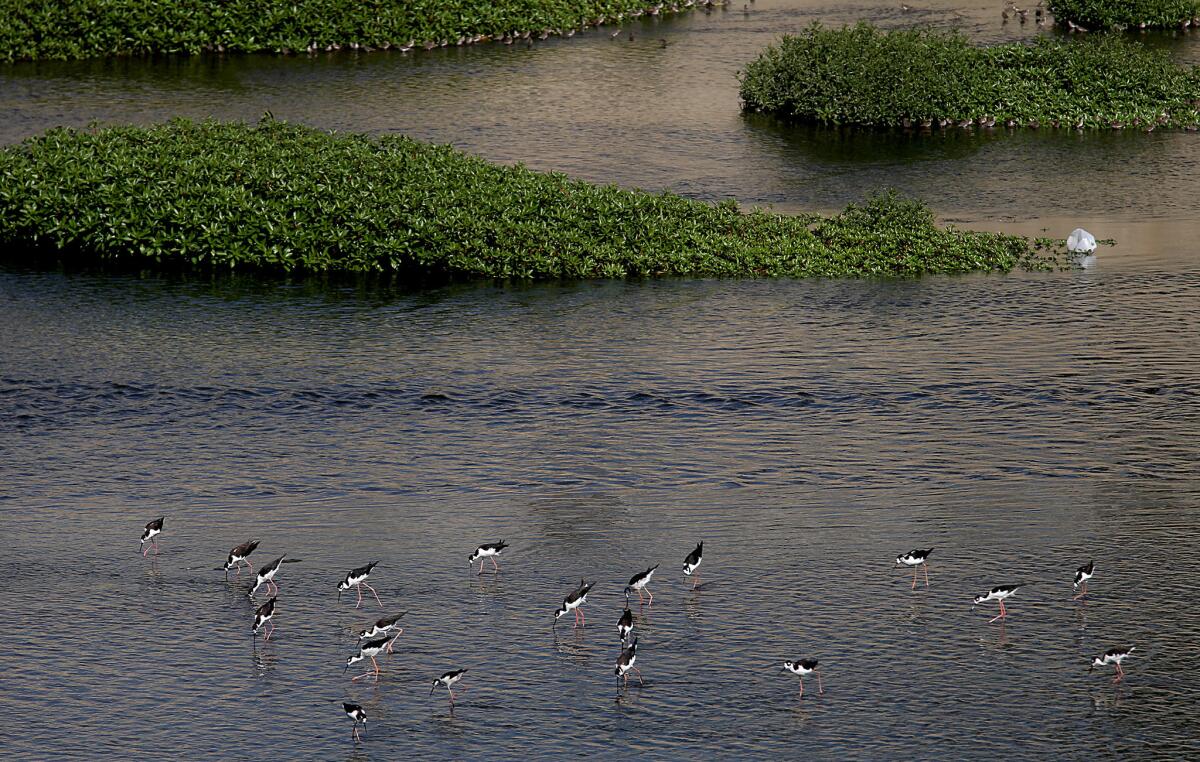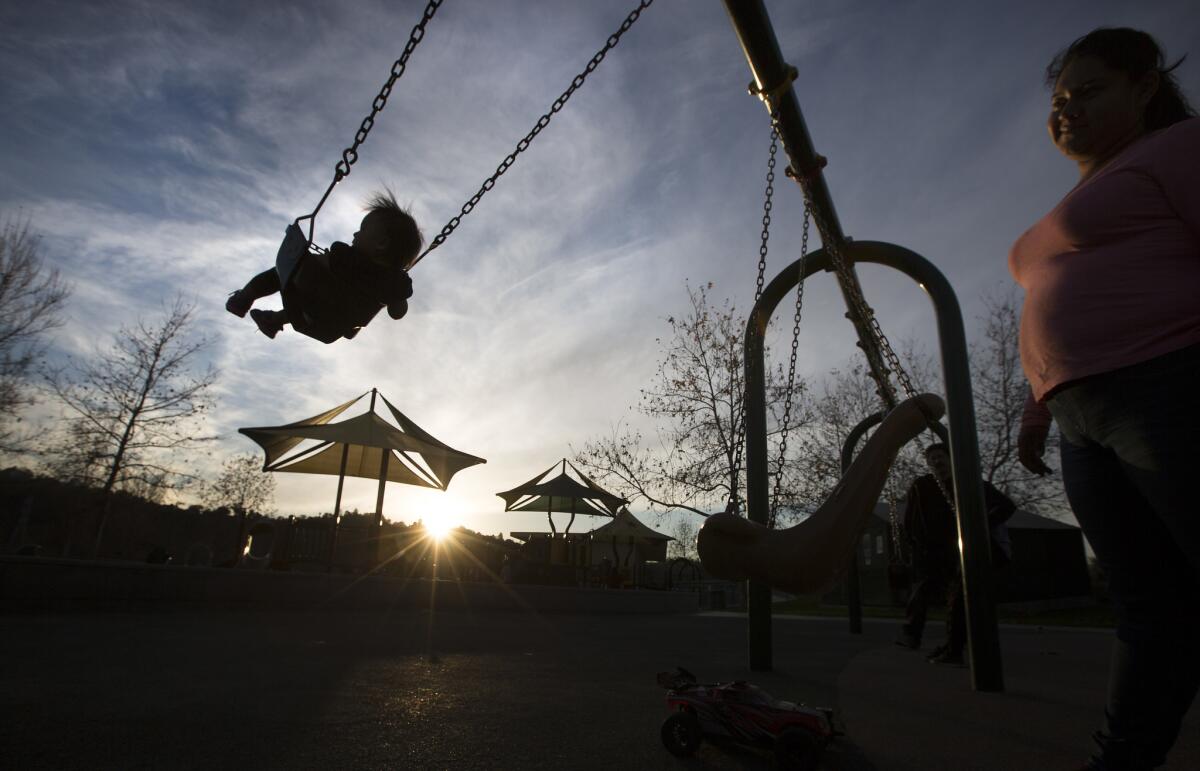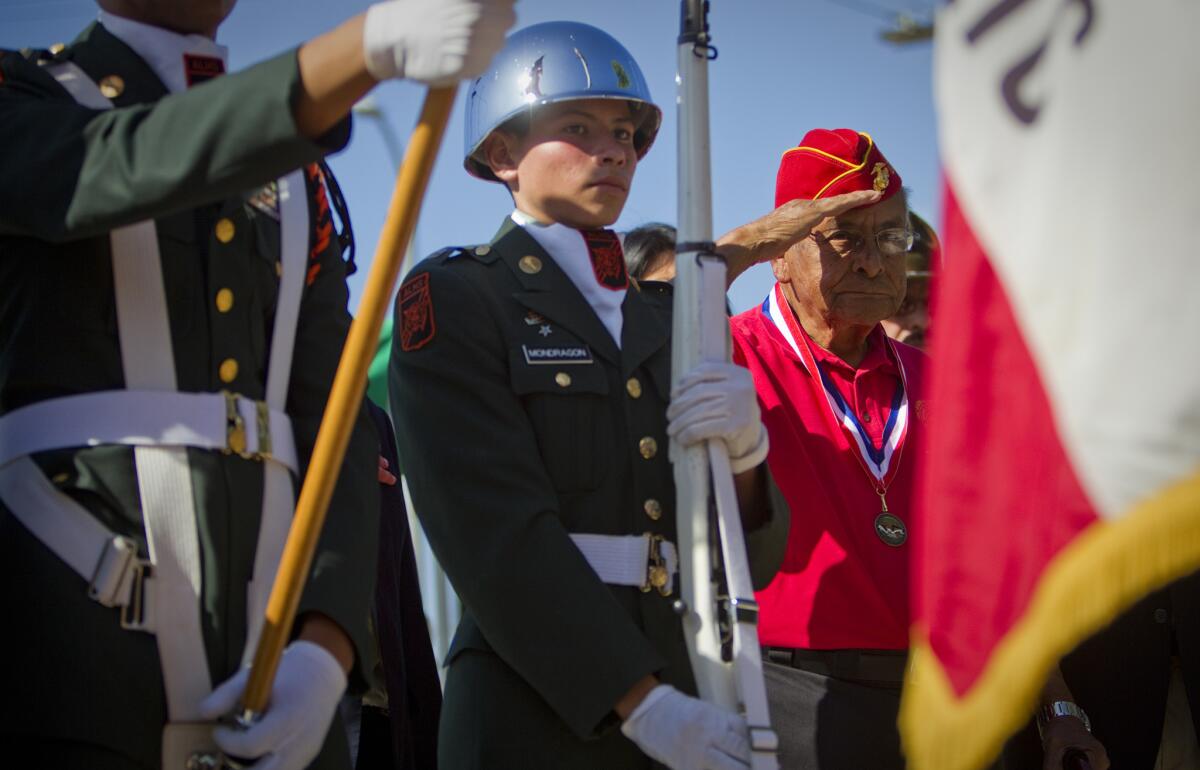Neighborhood Spotlight: Cypress Park’s assets flow freely

- Share via
When the expedition of Spanish explorer Gaspar de Portola came upon the confluence of the Arroyo Seco and Los Angeles River in 1769 — their first sight of water after many days of trekking west across the dusty floor of the San Gabriel Valley — the scene that greeted them moved Fray Juan Crespi to record that the area was a “very spacious valley, well grown with cottonwoods and alders, among which ran a beautiful river.”
It was a colonial expedition, and the same diaries that were full of evocative descriptions of natural beauty also contained the cold language of conquest. The ability of the land to support a large settlement was duly noted, as was the presence of the native peoples who welcomed the Spaniards with gifts of shells.
The site of their camp became a place of transit. The San Fernando Road would be built to connect the pueblo of Los Angeles to the mission in the fertile valley to the north. Then came a stage line and then a railroad, which brought with it the first real estate boom.
In the 1880s the area would become the community of Cypress Park, and its streetcar connections and proximity to downtown brought suburbanization to the formerly agricultural land.
The Southern Pacific Railroad built the mighty Taylor Yard along the banks of the Los Angeles River, and the bulk of L.A.’s freight train traffic flowed through Cypress Park for the better part of 40 years. Changing technology led to the disappearance of 5,000 railroad jobs based in the yards over a period of slow decline, until it closed for good in the 1980s.
By that time the freeway had become ascendant in L.A. The 5 and the 110 freeways, which follow the course of the river and arroyo, respectively, were built to intersect where the bodies of water meet, near what was Portola’s camp. They carried freight and residents out of the city and into the San Fernando and San Gabriel valleys.
After experiencing decades of economic dislocation in the wake of the area’s deindustrialization, Cypress Park is once again moving to the center of things. Efforts to restore the Los Angeles River through expanded parkland are gathering steam, and a new bridge connecting Cypress Park to the Elysian Valley has finally been completed.
Most recently, news that Zillow named Cypress Park the hottest neighborhood in L.A. got property values moving up and to the right, along with fears that longtime residents were facing the potential loss of their homes to rising rents.
Neighborhood highlights
A river renaissance: With the recent purchase of a key riverfront section of the old Taylor Yard, L.A. is now set to restore a mile-long stretch of the rio to something approaching its former glory.
A renovator’s dream: Cypress Park has a wide range of historic housing styles, including American Revival cottages and Craftsman and Mediterranean Revival homes.
Downtown-adjacent: For those who want to enjoy the fruits of downtown’s revival while owning a home instead of a condo, Cypress Park’s close-in location and Gold Line access are a plus.

Neighborhood challenges
Gentrification blues: Cypress Park is 82% Latino, and most households make less than $40,000 a year, meaning that residents could be especially vulnerable to a rapidly changing real estate market.
Expert insight
“It’s definitely going through a transformation, kind of like what happened with Highland Park years ago,” said Hall & Chambers agent Louis Salazar, who last month sold a Craftsman bungalow in Cypress Park.
Gentrification is having an impact on the area, said Salazar, but it’s also helping to improve it.
“The property values are going higher,” he said. “It’s truly a nice pocket — close to downtown L.A., close to freeways, close to Eagle Rock and Highland Park — it’s very centralized.”
Like other parts of Los Angeles County, a lack of homes for sale is the biggest hurdle for home buyers. “Inventory, always inventory,” he said.

Market snapshot
In the 90065 ZIP Code, based on 11 sales, the median sales price for single-family homes in February was $845,000, according to CoreLogic. That was a 24.8% increase in price over the same month the previous year.
Report card
Within the boundaries of Cypress Park are Aragon Avenue Elementary, Loreto Street Elementary and Florence Nightingale Middle, which had scores of 757, 717 and 756, respectively, out of 1,000 in the 2013 Academic Performance Index.
Nearby schools include Hillside Elementary, which had a score of 721, and Glassell Park Elementary, which scored 742. Alliance College-Ready Middle Academy No.5 had a score of 768.
MORE FROM HOT PROPERTY
New build in Brentwood has an on-top-of-the-world vibe
Spotting the slippery slope: What to watch out for when buying a hillside home
What San Diego County’s median home price buys right now in three neighborhoods
More to Read
Sign up for Essential California
The most important California stories and recommendations in your inbox every morning.
You may occasionally receive promotional content from the Los Angeles Times.






